What is Stormwater Monitoring?
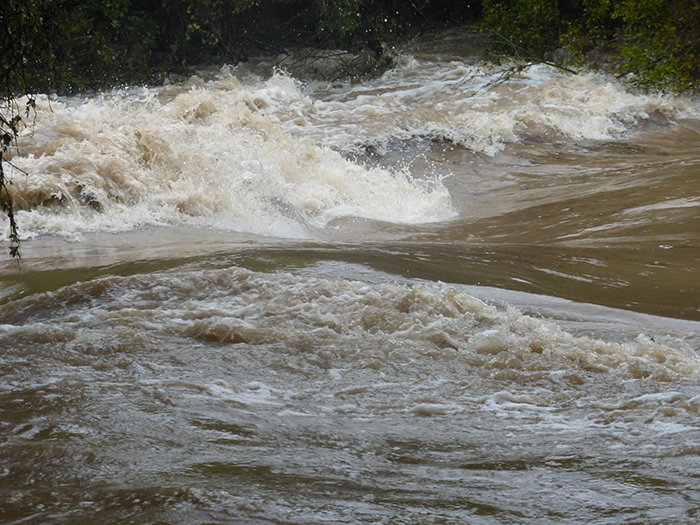
Strong flow in Waller Creek after a significant storm
This may be hard to believe during the hot, dry months of summer, but Austin receives an average of 35 inches of rain a year, or nearly 5 inches more than the average rainfall over the continental United States. Central Texas rain tends to fall in large surges, rather than slowly throughout the year. Heavy rainfall can overwhelm the capacity of natural areas and lawns to absorb and hold the water. Water that does not soak into porous ground flows over land and can build up great speed and force when running off streets, parking lots, and buildings.
The City of Austin maintains an intricate storm drain system known as a Municipal Separate Storm Sewer System (MS4) to direct this stormwater runoff away from the City’s wastewater treatment facilities and into our local creeks.

Stream bank erosion after a storm in the Brentwood neighborhood
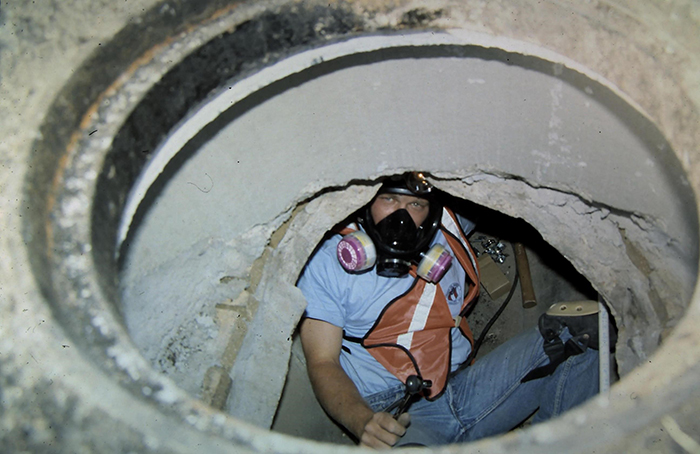
Installing sensor and sampling lines at the Burton Drive monitoring site
We monitor both stormwater flow and water quality throughout the year. Runoff water collects pollutants from the land as it flows downhill to creeks, lakes, and the river. This polluted water can harm aquatic organisms and affect public health. This polluted water can also make its way to the Edwards Aquifer and jeopardize the agricultural, industrial, recreational, and domestic needs of nearly two million people in south central Texas.
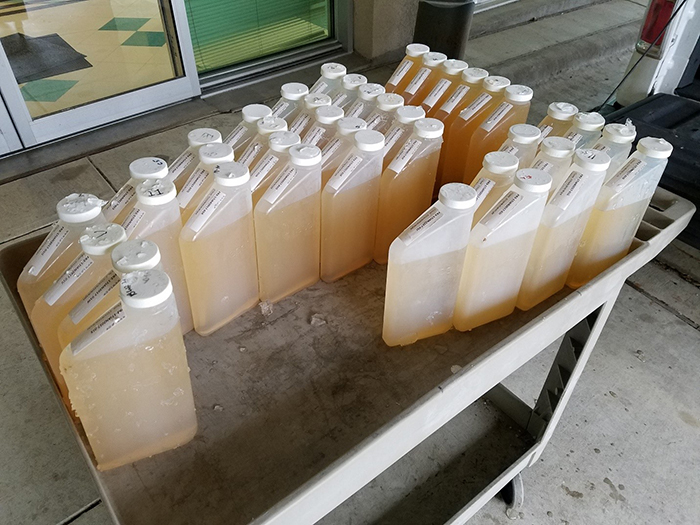
We send water quality samples collected during storms to a Lower Colorado River Authority (LCRA) lab for analysis.
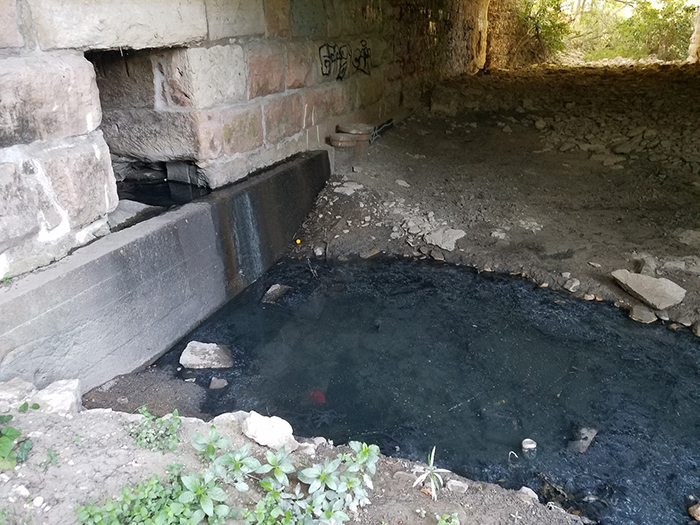
We inspect water flow during the dry season too, as part of state requirements.
Monitoring stormwater runoff since the 1980s, the City of Austin has developed one of the best programs in the nation. The federal Environmental Protection Agency (EPA) has recognized Austin for its innovative approach to stormwater monitoring.

Our surface water evaluation team works to anticipate and prepare for storms. (Photo circa 1993)

Collecting data by measuring the speed of water flow inside an underground stormwater pipe
The Stormwater Monitoring Program process involves a carefully choreographed dance of numerous professionals to ensure the integrity of the sample collection and the resulting data. Some Austin rain events are very short and provide only a small window of opportunity to collect samples, so our staff must work quickly.
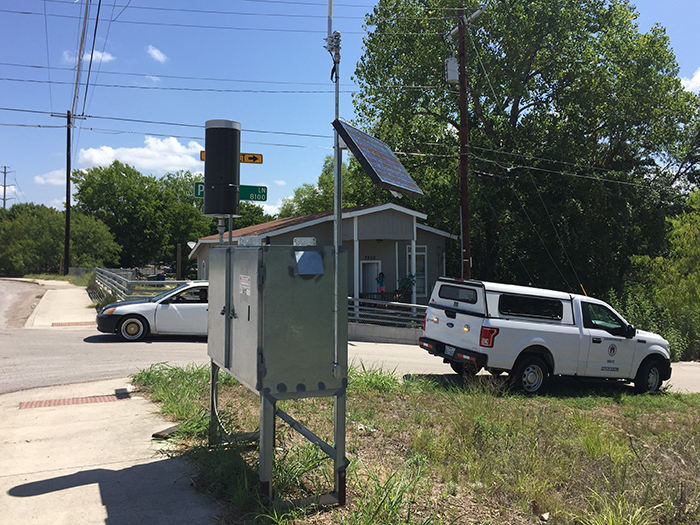
A joint water quality monitoring station and flood early warning system at Carson Creek

Before storms, staff clean the rain gauge, synchronize the flow meter, and ice the sampler to preserve the water sample to be collected at Lions Municipal Golf Course.
Over the years, the City of Austin has implemented numerous control measures to limit the flow of pollutants into creeks. Carefully designed low areas of land, like rain gardens and ponds, hold the runoff and allow it to soak slowly into the soil, filtering the water and leaving contaminants behind. Community outreach programs, such as Grow Green and Scoop the Poop, educate Austinites about how to keep pollutants off the land so they do not flow into our water.
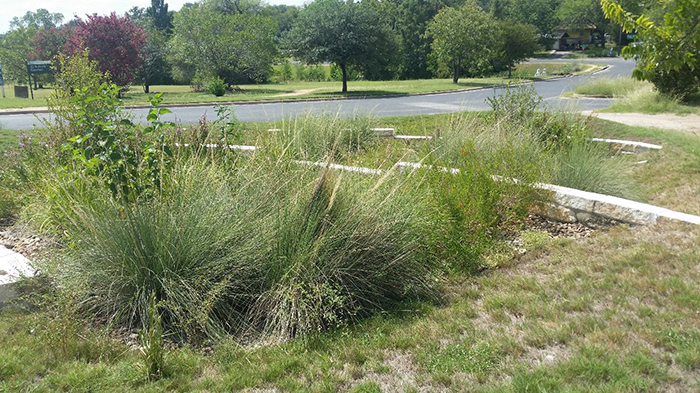
Rain garden at Palo Pinto Drive and Denver Avenue (JJ Seabrook Greenbelt Trail)
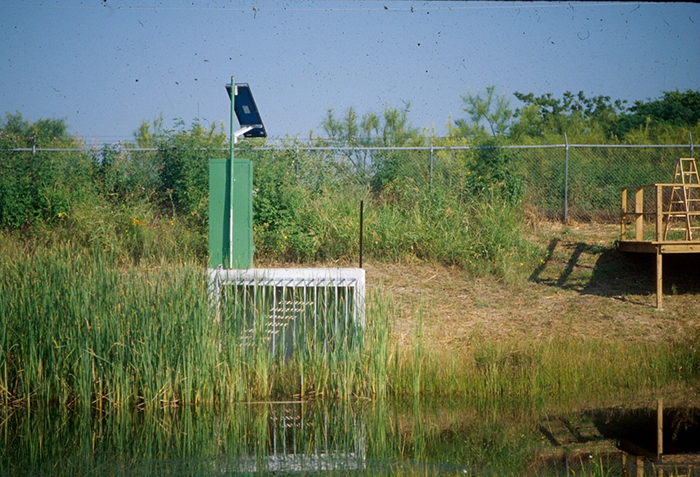
Storm water monitoring station at St. Elmo Recreational flood control detention pond
The work of the Stormwater Monitoring Program professionals helps protect water quality and residents of the City of Austin. The next time you head outside in the rain, know that we’re out there too!
